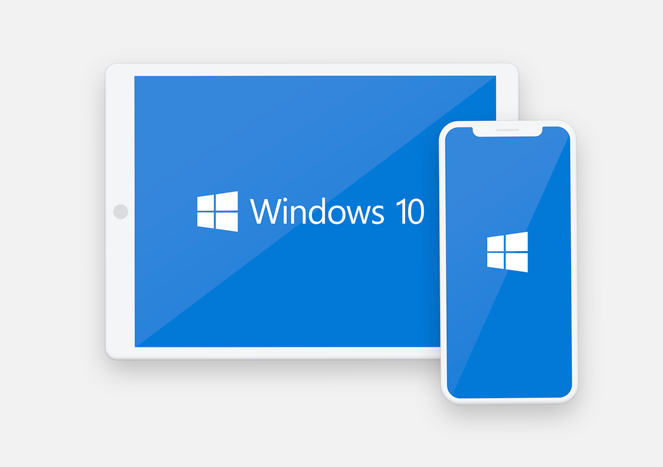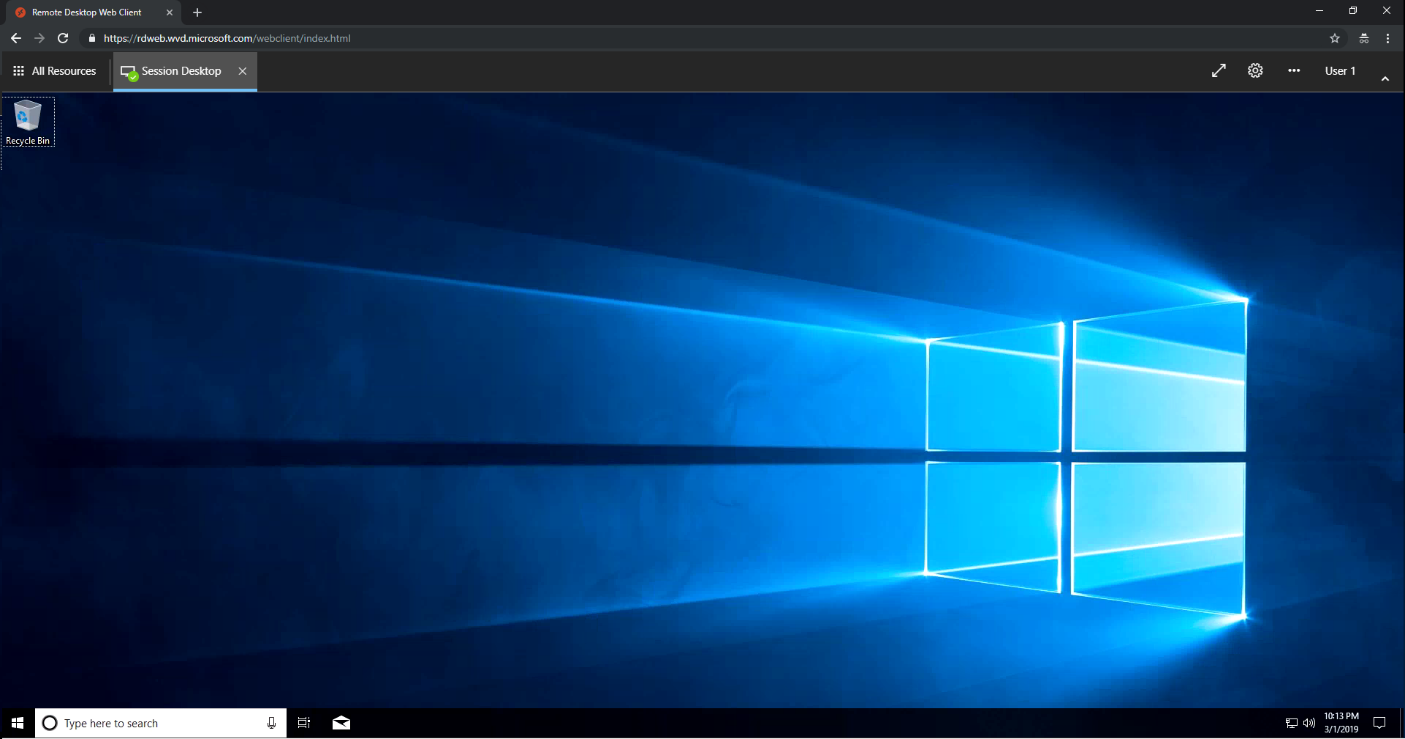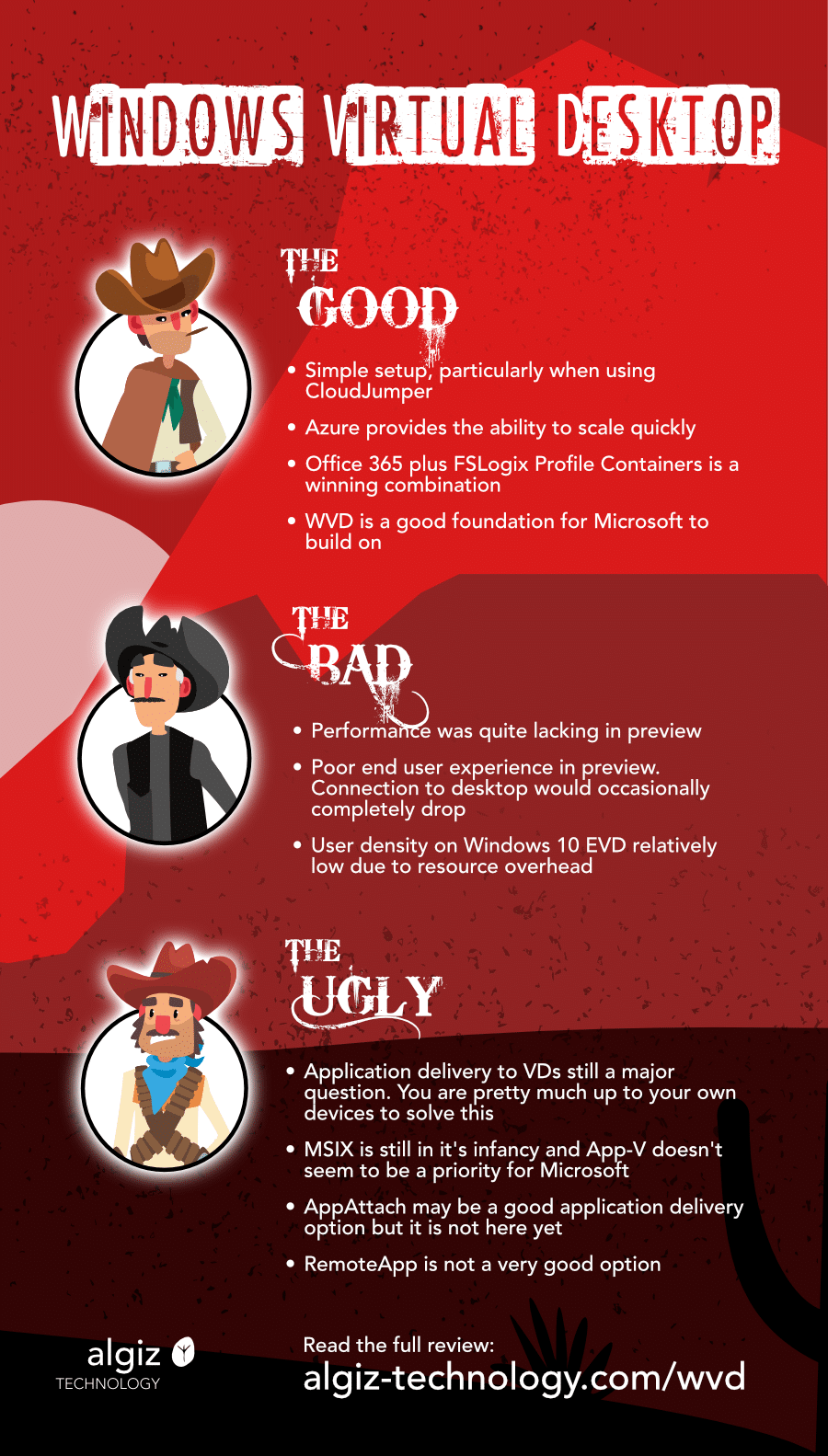This post about “Virtual Desktops or Remote Desktops” was written by guest blogger Microsoft MVP Brien M. Posey.
- Remote Desktop Connection To Virtual Machine Windows 10
- Remote Virtual Desktop Windows 10 Home
- Remote Virtual Desktop Windows 10 Login
- Remote Desktop Switch Screen
- Remote Virtual Desktop Windows 10 App
- Windows Remote Desktop Switch Desktop
- Windows Virtual Desktop Performance
Virtual Desktops or Remote Desktops?
One of the big questions that administrators will have to address when designing a private cloud is whether to use remote desktops or virtual desktops. Each approach has its unique advantages and disadvantages.
Remote desktops are part of Microsoft terminal servers. In a terminal server environment, users establish a connection to one or more centralized terminal servers. The user’s applications run directly on the terminal server rather than running in a virtual desktop environment.
Jun 19, 2020 The following steps are optional a s you could run Remote Assistance as well directly from your Windows 10 physical desktop and/or laptop. You only have to make sure the network of the session hosts can be reached. Go to the Windows Virtual Desktop service in the Azure Portal. Select your Remote App – application group. Use the Microsoft Remote Desktop app to connect to a remote PC or virtual apps and desktops made available by your admin. The app helps you be productive no matter where you are. Getting Started Configure your PC for remote access first. The following steps are optional a s you could run Remote Assistance as well directly from your Windows 10 physical desktop and/or laptop. You only have to make sure the network of the session hosts can be reached. Go to the Windows Virtual Desktop service in the Azure Portal. Select your Remote App – application group. On your local Windows 10 PC: In the search box on the taskbar, type Remote Desktop Connection, and then select Remote Desktop Connection. In Remote Desktop Connection, type the name of the PC you want to connect to (from Step 1), and then select Connect. On your Windows, Android, or iOS device: Open the Remote Desktop app (available for free.
The primary advantage of using remote desktops is simplicity. Remote desktop environments tend to have fewer infrastructure requirements than virtual desktop environments, which translates directly into lower implementation costs.
Historically, the most significant disadvantage of using remote desktops has been application compatibility. In the past, many applications would not run in a terminal server environment. Over the years, most of these compatibility problems have gone away. Some applications still won’t run properly on a terminal server, but it is possible to use an application virtualization solution as a workaround to the problem. Of course, doing so does have an impact on cost and complexity.
A virtual desktop environment (commonly referred to as VDI) makes use of extensive collections of virtual machines running on top of hypervisors. VDI environments tend to be much more complicated than remote desktop environments. In a VDI environment, administrators must manage extensive collections of virtual machines. Furthermore, a connection broker is needed to match in the user sessions two virtual machines. If not properly implemented, the connection broker can become a single point of failure or a significant performance bottleneck.
Virtual Desktop disambiguation
There is a disambiguity that exists when it comes to the definition of a virtual desktop. In a general sense, a virtual desktop is a preconfigured image of operating systems and applications which is separated from the end device that is used to access it. The endpoint devices can be laptops, tablets, or smartphones that can be used by users to access the virtual desktops.
The alternative definition of virtual desktop relates to Microsoft Windows. It is the feature offered by Windows 10 that allows you to add unlimited virtual desktops quickly and easily. You can create virtual desktops from the Task View pane, and manage the virtual desktop view, move applications to different desktops, close pages on selected virtual desktops or show the windows on all the desktops.
This article refers to the former kind of virtual desktop, i.e. the desktop images that can be delivered to endpoints and can be used from any device from any location.
Virtual Desktop vs Physical Desktop
There are several similarities and differences between virtual desktops and physical desktops.
Virtual Desktop vs Physical Desktop: Similarities
- The interface of virtual desktops and physical desktops are the same.
- The apps that run on virtual desktops are the same as that of physical desktops.
- Both virtual desktops and physical desktops offer a similar experience.
Virtual Desktop vs Physical Desktop: Differences
- Accessibility: Virtual desktops are accessible from anywhere over the internet. Physical desktops on the other hand are at a single location and require special software for remote access. Additionally, they need to be turned on.
- Device Usage: Virtual desktops can be used on any device. Physical desktops, alternatively, can only be used as a single device.
- Data Storage: Virtual desktops store data in a central data center instead of the local device. Physical desktops store data in their corresponding device storage.
- Security: Since data is stored centrally, virtual desktops are more secure than physical desktops. Additionally, if your endpoint device is stolen, data loss is not a significant issue. Since the data of physical desktops is stored on the device itself, a stolen physical desktop can prove to be a blow in the security of important data.
- Internet Connectivity: Virtual desktops always require internet connectivity to work. Physical desktops however do not need a stable internet connection.
- Upgrades and patching: Upgrades and patching for virtual desktop can be done remotely with ease by single IT staff. Doing the same in physical desktops, however, gives rise to significant downtime and requires IT staff to be physically present at each device location.
- User Management: User management is easy in virtual desktops as compared to physical desktops.
- Cost: Since virtual desktops can be run virtually on any device, upfront costs are reduced. Physical desktops however require organizations to spend upfront infrastructure costs.
Benefits of Virtual Desktops
Despite its cost and complexity, virtual desktop environments do offer several advantages over remote desktops. For one thing, virtual desktops provide end-users with a familiar experience. When a user logs onto a virtual desktop, they usually interact with desktop operating systems such as Windows 7 or Windows 8. Remote Desktop environments, on the other hand, sometimes force users to use a server desktop.
“Virtual desktops” also allow for a far higher degree of personalization, because they consist of extensive collections of virtual machines, it is possible to create multiple categories of virtual machines to service the various means of users throughout the organization. For example, an administrator could create one virtual machine image for the Finance Department and a different virtual machine image for Human Resources.
Similarly, an administrator can decide whether to make virtual desktops persistent or nonpersistent. In other words, a virtual desktop can be configured to begin every session in a pristine state, or it can be set to maintain user state data from one session to the next, thereby acting as a personal virtual desktop.
The choice over whether an organization should use virtual desktops or remote desktops largely depends upon the organization’s needs. Virtual desktops generally offer a higher degree of flexibility but do so at a higher cost than what might incur with remote desktops.

Parallels RAS can utilize both VDI and RDS technologies
Both VDI and RDS technologies can help you achieve desktop virtualization, and deliver the performance, security, and flexibility you need for your business. As an organization, deciding which desktop virtualization to use can be a daunting task since each technology has its own merits and demerits.
What if there was an optimal solution that offers the best of both worlds?
Parallels® Remote Application Server (RAS) is a desktop virtualization platform that utilizes both VDI and RDS to build infrastructure that’s not only flexible but also secure and performance oriented. Parallels RAS is platform-independent—meaning, you can deliver any Windows application or desktop to any end-device, geographical location, and at any time.
Parallels RAS provides customized templates that companies can use to deliver VDI or RDS on-demand with maximum infrastructural flexibility to any end-device or location. Besides, IT administrators can easily switch between the two technologies without extra planning. Most of all, you have access to either VDI or RDS without additional costs, potentially saving lots of money for your organization.
About Brien M. Posey
Brien Posey is a ten-time Microsoft MVP with two decades of IT experience. Before becoming a freelance technical writer, Brien served as CIO for a national chain of hospitals and healthcare facilities. He has also worked as a network administrator for some of the nation’s largest insurance companies and the Department of Defense at Fort Knox.
Since going freelance in 2001, Brien has become a prolific technical author. He has published many thousands of articles and numerous books on a wide variety of topics (primarily focusing on enterprise networking). In addition to his writing, Brien has provided consulting services to clients and speaks at IT events all over the world.
Try a free 30-day trial of Parallels RAS today.
References:
How to Use Virtual Desktops in Windows 10: How-to Geek
Virtual Desktops: blogs.windows.com
Virtual Desktops: Wikipedia
What is a Virtual Desktop, and Why Should You Care?: Small Business Computing
Virtual Desktops: howtogeek.com
Parallels: Remote Desktop Manager
This post about “Virtual Desktops or Remote Desktops” was written by guest blogger Microsoft MVP Brien M. Posey.
Virtual Desktops or Remote Desktops?

One of the big questions that administrators will have to address when designing a private cloud is whether to use remote desktops or virtual desktops. Each approach has its unique advantages and disadvantages.
Remote desktops are part of Microsoft terminal servers. In a terminal server environment, users establish a connection to one or more centralized terminal servers. The user’s applications run directly on the terminal server rather than running in a virtual desktop environment.

The primary advantage of using remote desktops is simplicity. Remote desktop environments tend to have fewer infrastructure requirements than virtual desktop environments, which translates directly into lower implementation costs.
Historically, the most significant disadvantage of using remote desktops has been application compatibility. In the past, many applications would not run in a terminal server environment. Over the years, most of these compatibility problems have gone away. Some applications still won’t run properly on a terminal server, but it is possible to use an application virtualization solution as a workaround to the problem. Of course, doing so does have an impact on cost and complexity.
A virtual desktop environment (commonly referred to as VDI) makes use of extensive collections of virtual machines running on top of hypervisors. VDI environments tend to be much more complicated than remote desktop environments. In a VDI environment, administrators must manage extensive collections of virtual machines. Furthermore, a connection broker is needed to match in the user sessions two virtual machines. If not properly implemented, the connection broker can become a single point of failure or a significant performance bottleneck.
Virtual Desktop disambiguation

There is a disambiguity that exists when it comes to the definition of a virtual desktop. In a general sense, a virtual desktop is a preconfigured image of operating systems and applications which is separated from the end device that is used to access it. The endpoint devices can be laptops, tablets, or smartphones that can be used by users to access the virtual desktops.
Remote Desktop Connection To Virtual Machine Windows 10
The alternative definition of virtual desktop relates to Microsoft Windows. It is the feature offered by Windows 10 that allows you to add unlimited virtual desktops quickly and easily. You can create virtual desktops from the Task View pane, and manage the virtual desktop view, move applications to different desktops, close pages on selected virtual desktops or show the windows on all the desktops.
This article refers to the former kind of virtual desktop, i.e. the desktop images that can be delivered to endpoints and can be used from any device from any location.
Virtual Desktop vs Physical Desktop
There are several similarities and differences between virtual desktops and physical desktops.
Virtual Desktop vs Physical Desktop: Similarities
- The interface of virtual desktops and physical desktops are the same.
- The apps that run on virtual desktops are the same as that of physical desktops.
- Both virtual desktops and physical desktops offer a similar experience.
Virtual Desktop vs Physical Desktop: Differences
Remote Virtual Desktop Windows 10 Home
- Accessibility: Virtual desktops are accessible from anywhere over the internet. Physical desktops on the other hand are at a single location and require special software for remote access. Additionally, they need to be turned on.
- Device Usage: Virtual desktops can be used on any device. Physical desktops, alternatively, can only be used as a single device.
- Data Storage: Virtual desktops store data in a central data center instead of the local device. Physical desktops store data in their corresponding device storage.
- Security: Since data is stored centrally, virtual desktops are more secure than physical desktops. Additionally, if your endpoint device is stolen, data loss is not a significant issue. Since the data of physical desktops is stored on the device itself, a stolen physical desktop can prove to be a blow in the security of important data.
- Internet Connectivity: Virtual desktops always require internet connectivity to work. Physical desktops however do not need a stable internet connection.
- Upgrades and patching: Upgrades and patching for virtual desktop can be done remotely with ease by single IT staff. Doing the same in physical desktops, however, gives rise to significant downtime and requires IT staff to be physically present at each device location.
- User Management: User management is easy in virtual desktops as compared to physical desktops.
- Cost: Since virtual desktops can be run virtually on any device, upfront costs are reduced. Physical desktops however require organizations to spend upfront infrastructure costs.
Benefits of Virtual Desktops
Despite its cost and complexity, virtual desktop environments do offer several advantages over remote desktops. For one thing, virtual desktops provide end-users with a familiar experience. When a user logs onto a virtual desktop, they usually interact with desktop operating systems such as Windows 7 or Windows 8. Remote Desktop environments, on the other hand, sometimes force users to use a server desktop.
“Virtual desktops” also allow for a far higher degree of personalization, because they consist of extensive collections of virtual machines, it is possible to create multiple categories of virtual machines to service the various means of users throughout the organization. For example, an administrator could create one virtual machine image for the Finance Department and a different virtual machine image for Human Resources.
Similarly, an administrator can decide whether to make virtual desktops persistent or nonpersistent. In other words, a virtual desktop can be configured to begin every session in a pristine state, or it can be set to maintain user state data from one session to the next, thereby acting as a personal virtual desktop.
The choice over whether an organization should use virtual desktops or remote desktops largely depends upon the organization’s needs. Virtual desktops generally offer a higher degree of flexibility but do so at a higher cost than what might incur with remote desktops.
Parallels RAS can utilize both VDI and RDS technologies
Both VDI and RDS technologies can help you achieve desktop virtualization, and deliver the performance, security, and flexibility you need for your business. As an organization, deciding which desktop virtualization to use can be a daunting task since each technology has its own merits and demerits.
What if there was an optimal solution that offers the best of both worlds?
Parallels® Remote Application Server (RAS) is a desktop virtualization platform that utilizes both VDI and RDS to build infrastructure that’s not only flexible but also secure and performance oriented. Parallels RAS is platform-independent—meaning, you can deliver any Windows application or desktop to any end-device, geographical location, and at any time.
Parallels RAS provides customized templates that companies can use to deliver VDI or RDS on-demand with maximum infrastructural flexibility to any end-device or location. Besides, IT administrators can easily switch between the two technologies without extra planning. Most of all, you have access to either VDI or RDS without additional costs, potentially saving lots of money for your organization.
About Brien M. Posey

Remote Virtual Desktop Windows 10 Login
Brien Posey is a ten-time Microsoft MVP with two decades of IT experience. Before becoming a freelance technical writer, Brien served as CIO for a national chain of hospitals and healthcare facilities. He has also worked as a network administrator for some of the nation’s largest insurance companies and the Department of Defense at Fort Knox.
Since going freelance in 2001, Brien has become a prolific technical author. He has published many thousands of articles and numerous books on a wide variety of topics (primarily focusing on enterprise networking). In addition to his writing, Brien has provided consulting services to clients and speaks at IT events all over the world.
Try a free 30-day trial of Parallels RAS today.
Remote Desktop Switch Screen
References:
Remote Virtual Desktop Windows 10 App
How to Use Virtual Desktops in Windows 10: How-to Geek
Virtual Desktops: blogs.windows.com
Windows Remote Desktop Switch Desktop
Virtual Desktops: Wikipedia
Windows Virtual Desktop Performance
What is a Virtual Desktop, and Why Should You Care?: Small Business Computing
Virtual Desktops: howtogeek.com
Parallels: Remote Desktop Manager
